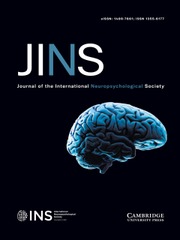No CrossRef data available.
Article contents
Assessing how well educational supports map on to neurocognitive needs in high-risk pediatric populations: Developing a tool for examining alignment
Published online by Cambridge University Press: 22 October 2025
Abstract
Pediatric cancer survivors are at increased risk for neurocognitive challenges that can impact academic achievement and attainment. Educational supports via accommodations or special education can promote better outcomes for these youth; however, barriers often stand in the way of appropriate supports being implemented. Neuropsychological evaluation reports highlight a child’s neurocognitive strengths and needs, but an additional tool to assist parents and educators in understanding the extent to which a child’s neurocognitive needs are addressed by their educational supports may help ensure appropriate supports.
The present study piloted a novel neurocognitive needs-to-educational supports alignment rubric in a referred sample of pediatric survivors of cancer, bone marrow transplant, and cancer predisposition syndromes (i.e., neurofibromatosis).
Inter-rater reliability across disciplines was satisfactory. Among school-aged patients who were attending public school (n = 90), mean needs-to-supports alignment was 20.3%, indicating that on average, referred patients were receiving minimal classroom supports addressing identified neurocognitive needs. Among the 42.9% with a formal support plan, proportion of needs met by a support rose to only 47%, indicating that in spite of some recognition of patient needs, supports remain inadequate to the breadth of patient needs.
This alignment tool can assist parents and educators in better tailoring a child’s educational supports to meet their needs, serve as a communication tool between healthcare and education teams, and provide a quantitative metric for evaluating educationally focused interventions (e.g., school liaison programming) in youth with a variety of chronic health conditions and developmental disabilities.
Keywords
Information
- Type
- Research Article
- Information
- Copyright
- © The Author(s), 2025. Published by Cambridge University Press on behalf of International Neuropsychological Society

